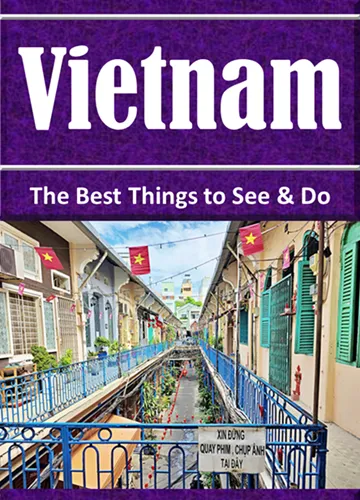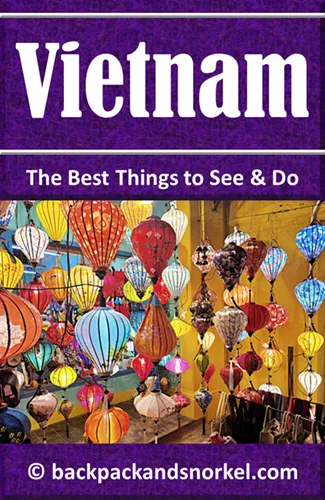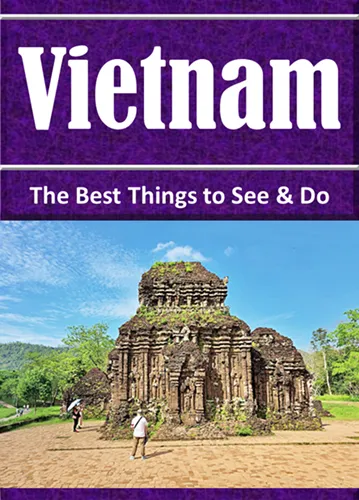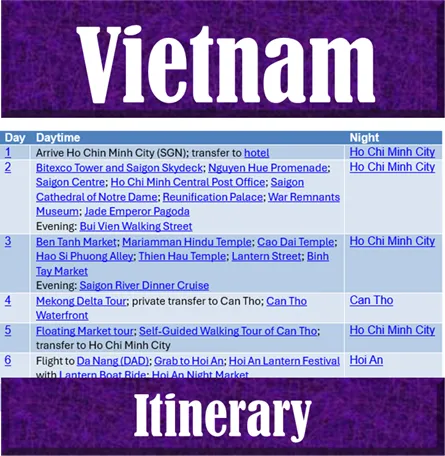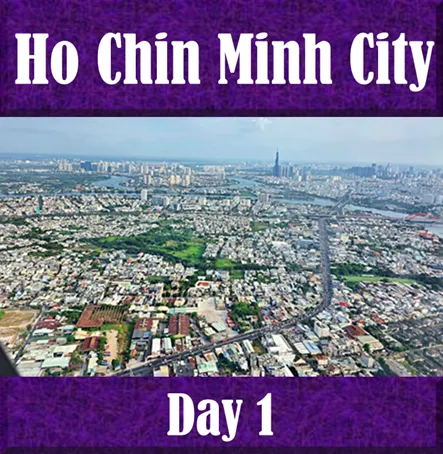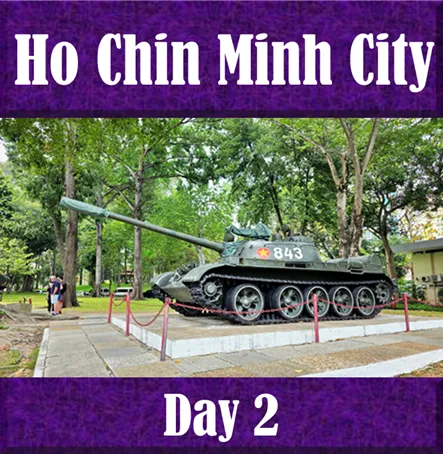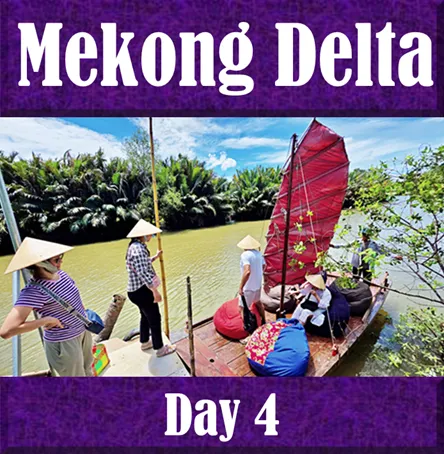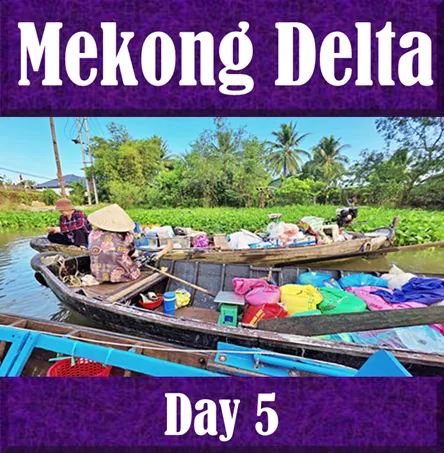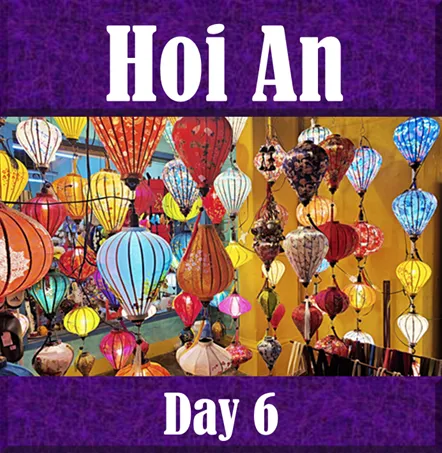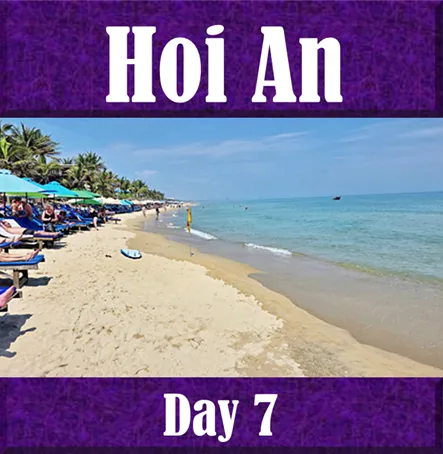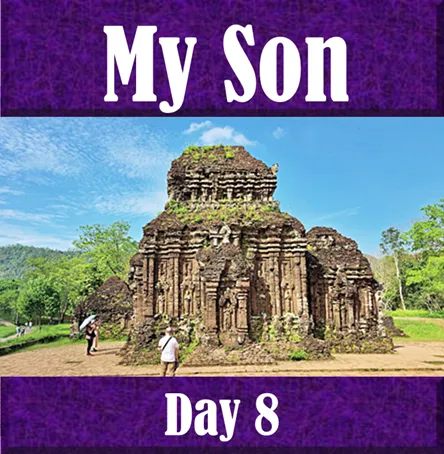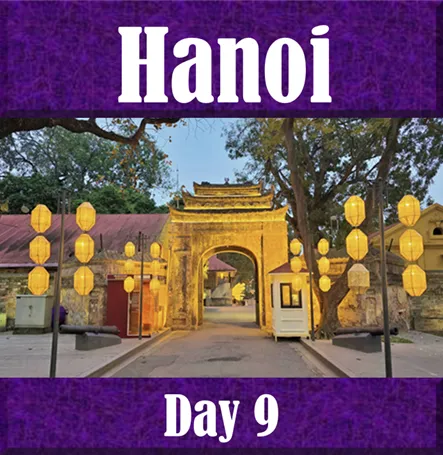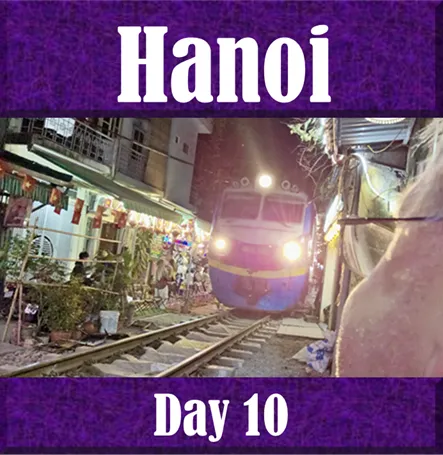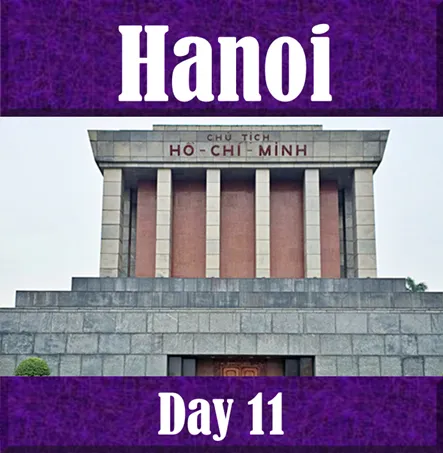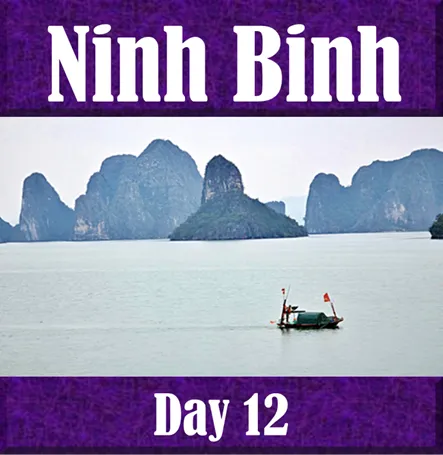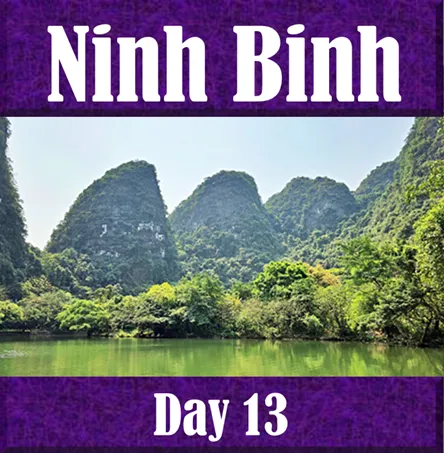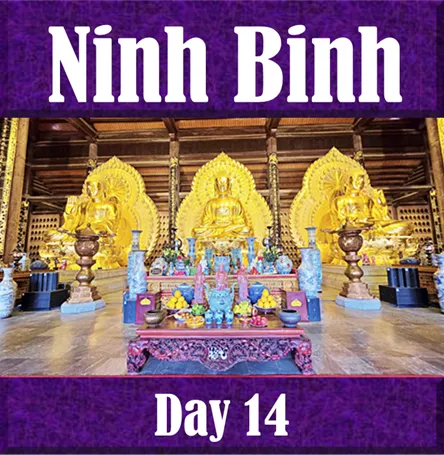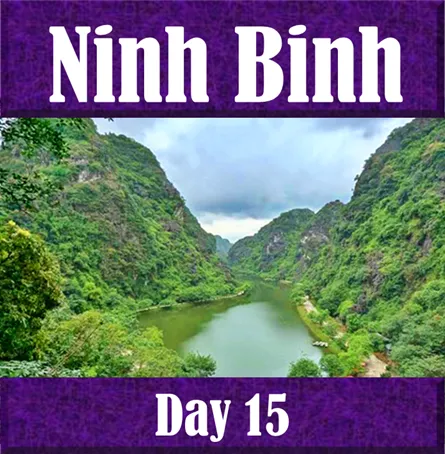Guide to Hoa Lư Ancient Capital: The Cradle of a Unified Vietnam | Vietnam Purple Travel Guide
(map, reviews)
This is Premium Content! To access it, please download our
Backpack and Snorkel Purple Travel GuideEntrance Fee: 20,000 VND cash only (at the time of writing)
Opening Hours: 7am – 5pm daily
Remark: Hoa Lu Old Town, where we spent yesterday evening, and this attraction: Hoa Lu Ancient Town, are two completely different attractions.
Serving as the first capital of a unified Vietnam under the Đinh and Early Lê dynasties, Hoa Lu Ancient marks the beginning of Vietnam’s independence after nearly a thousand years of Chinese rule. Today, visitors can explore restored temples dedicated to Emperor Đinh Tiên Hoàng and Lê Đại Hành, walk through historic courtyards, and take in the tranquil natural setting that once protected this royal seat from invasion. Though modest in scale, Hoa Lư offers a rich glimpse into the country's imperial origins and early nation-building.
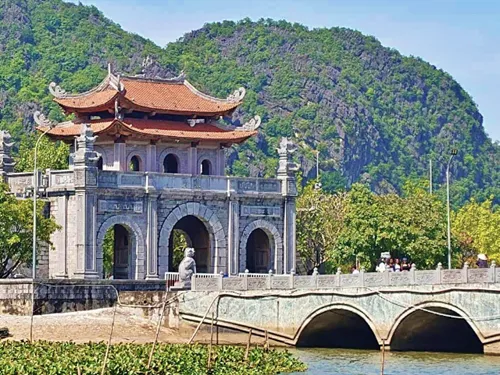
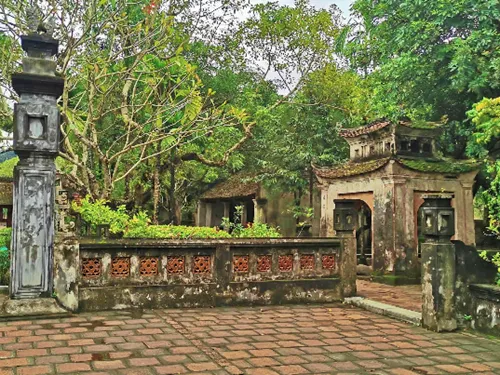
History of Hoa Lư: Vietnam’s First Capital
Hoa Lư served as the first capital of a unified Vietnam in the 10th and early 11th centuries, from 968 to 1010 CE. This period marked the rise of Vietnamese independence after centuries of Chinese domination.
In 968, following the collapse of the Chinese-controlled Southern Han rule, Đinh Bộ Lĩnh declared himself Emperor Đinh Tiên Hoàng and established the capital in Hoa Lư, a naturally fortified area surrounded by towering limestone karsts. This choice was strategic: the area’s geography made it nearly impenetrable to invaders.
Under the Đinh Dynasty and later the Early Lê Dynasty, led by Lê Đại Hành, Hoa Lư became the political, economic, and military center of Đại Cồ Việt (the name of Vietnam at the time). In 1010, Emperor Lý Thái Tổ moved the capital to Thăng Long (modern-day Hanoi), but Hoa Lư retained its historical and spiritual significance.
Today, although the original imperial palaces no longer exist, temples, stone relics, shrines, and ancient foundations remain, offering a glimpse into Vietnam’s formative royal past.
Why You Should Visit Hoa Lư Ancient Capital
Hoa Lư Ancient Capital is an interesting visit for history lovers, cultural travelers, and photographers alike. It combines historical depth with stunning natural scenery. The site is part of the Trang An Landscape Complex, a UNESCO World Heritage Site, and provides a peaceful, uncrowded alternative to more touristic areas.
You will walk through quiet temples, ancient gates, and ceremonial courtyards surrounded by dramatic karst cliffs and rice paddies—a place where history and landscape harmonize perfectly.
Be advised that there is not a whole lot to see and distances between the buildings are big, so you will either need to walk a lot, or hire one of the locals to give you a ride.
Tourist Harassment and Motorbike Parking Scams
While Hoa Lư is a peaceful and historically important site, visitors should be aware of common tourist scams near the entrance. It is not unusual for locals to wave you down and aggressively insist that you park your motorbike or bicycle in front of their shop or house, claiming it is the official parking area. In most cases, this is untrue—these are private lots trying to charge for services you may not need. Some may also follow or harass you if you decline. To avoid this, look for the official ticket booth or parking lot near the main gate, which is clearly marked and reasonably priced. A polite but firm ‘Không, cảm ơn’ (‘No, thank you’) is often enough to discourage persistent touts.
What to See at Hoa Lư Ancient Capital
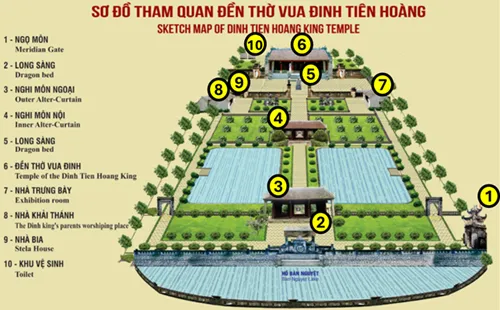
1 = Meridian gate
2 = Dragon Bed
3 = Outer Alter-Curtain
4 = Inner Alter-Curtain
5 = Dragon Bed
6 = Temple of the Dinh Tien Hoang King
7 = Exhibition Room
8 = The Dinh King’s Parents Worship Place
9 = Stela House
10 = Restrooms
1. Meridian Gate
The Meridian Gate is the formal southern entrance to the Dinh Tiên Hoàng temple complex. Built in traditional Vietnamese style with tiled roofs and wooden pillars, it served as the ceremonial main gate aligned with the center axis of the royal compound. Passing through it symbolically marks your entry into a sacred, historical space once reserved for imperial rituals.
2 & 5. Dragon Bed (Sập Rồng)
There are two stone slabs referred to as Dragon Beds, located symmetrically within the temple grounds. These ornately carved platforms are believed to represent the imperial throne or ceremonial altar, where offerings or tributes may have been placed. The dragon motif symbolizes power, authority, and divine protection in Vietnamese imperial culture.
3. Outer Altar-Curtain (Bức Màn Ngoài)
This structure marks the outer sanctified space leading toward the temple's inner sanctuary. It served as a boundary or transition point where visitors might offer incense or prayers before entering deeper into the sacred compound. Architecturally, it frames the temple's central axis and enhances the spiritual layering of the site.
4. Inner Altar-Curtain (Bức Màn Trong)
Located closer to the main sanctuary, the Inner Altar-Curtain was a more restricted space used in formal rituals. It represents the threshold between public ceremonial space and the most sacred inner sanctum, reinforcing the importance of hierarchy and purity in Confucian and imperial ritual practice.
6. Temple of Đinh Tiên Hoàng
This beautifully preserved temple honors Emperor Đinh Tiên Hoàng, who unified Vietnam in the 10th century and established Hoa Lư as the nation's first capital. The temple sits on the former site of the royal palace and features a series of courtyards, altars, and statuary. Inside, you will find a revered statue of the emperor and richly carved woodwork reflecting early Vietnamese dynastic art.
7. Exhibition Room
The Exhibition Room offers a curated look into the history, archaeology, and cultural artifacts of Hoa Lư and the Đinh-Lê dynasties. Here, you can see ancient weapons, coins, tools, and dioramas that bring to life the daily life, governance, and warfare of 10th-century Vietnam. It is a great place to gain context before visiting the temples.
8. The Đinh King’s Parents’ Worship Place
This smaller, intimate shrine honors the parents of Emperor Đinh Tiên Hoàng, acknowledging the Confucian virtue of filial piety. It reinforces the emperor’s devotion to his ancestry and provides a peaceful setting for offerings and reflection. The site also highlights the dynasty's emphasis on family lineage and moral duty.
9. Stela House (Nhà Bia)
The Stela House contains stone stele slabs engraved with historical records and dedications. These inscriptions were carved by scholars and officials to commemorate temple restorations, royal decrees, or major events. Each stele is mounted on a stone tortoise (a symbol of longevity and wisdom), and offers invaluable insight into Vietnam’s early recorded history.
Scenic Landscape
The surrounding scenery of limestone mountains, lotus ponds, and rice fields is breathtaking. This natural beauty makes Hoa Lư not just a historical site but a stunning backdrop for walking, cycling, and photography.
Where do you want to go now?
Author: Rudy at Backpack and Snorkel
Bio: Owner of Backpack and Snorkel Travel Guides. We create in-depth guides to help you plan unforgettable vacations around the world.
Other popular Purple Travel Guides you may be interested in:
Like this Backpack and Snorkel Purple Travel Guide? Pin these for later:

